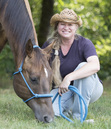Elena Hartwell's Blog, page 63
March 29, 2020
Three Subgenres in Crime Fiction: Three New Novels
One Military Thriller, One Historical Mystery, and One Suspense Thriller
There are a lot of subgenres in crime fiction. Whatever you’re looking for, you’ll love discovering these debut authors and their brand new releases! I’m thrilled to introduce Al Pessin, Erica Ruth Neubauer, and Richard Santos.
The Author

Al Pessin
Al Pessin is an award-winning journalist, author and playwright. Al was a journalist for the Voice of America for 39 years, including correspondent postings in Hong Kong, Islamabad, Beijing, Jerusalem and London.
He was a member of the White House press corps in the 1990s, making frequent trips with President Clinton. From 2006-11, Al covered the Pentagon, traveling with Secretaries Rumsfeld and Gates, and senior military officers, including numerous trips to the Iraq and Afghanistan war zones.
Al covered democracy movements on Manila’s EDSA Boulevard, Kyiv’s Independence Square and Beijing’s Tiananmen Square, among many other assignments.
He was expelled from China after the Tiananmen Massacre for “illegal news gathering” and “fomenting counter-revolutionary rebellion.”
Among other honors, that year he won a Gold Medal at the International Radio Festivals of New York and the Communicator of the Year Award from the National Association of Government Communicators.
Al has been published in the Los Angeles Times, Politico, TheHill.com, DefenseOne and several other publications. He is a member of International Thriller Writers, Mystery Writers of America, and the Authors Guild. Al lives in Delray Beach, FL with his wife Audrey and their precocious Labrador Rory.
To learn more about Al, click on his name or photo or any of the following links: Facebook, Twitter, and Instagram
The Book: Subgenre: Military Thriller
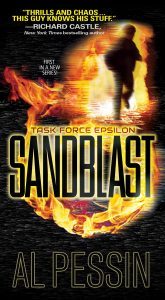
Military Thriller
Sandblast takes you inside a Taliban camp with undercover American soldier Faraz Abdallah, who is trying to find and stop the terrorist mastermind before an attack expected to be more devastating than 9-11.
As Faraz swirls into the vortex of radical Islam and is forced to become a terrorist, his boss at the Pentagon, Bridget Davenport, a woman with West Point and two combat tours behind her, has to fight the top brass and even the president to keep Faraz alive and keep his mission on track.
With the attack imminent and Faraz exposed, they find that in today’s wars any success comes at enormous cost, and no victory is absolute.
To buy the book, click on the following links: IndieBound, Barnes & Noble, Amazon
The Interview
Describe your publishing journey:
I had been thinking about Sandblast for ten years by the time I sat down to write it in August of 2015.
I worked with editor Lourdes Venard at Comma Sense Editing, made use of my many journalist, military and writer friends as beta-readers, and finished a solid draft in about a year.
I found an agent at a large New York agency fairly quickly, and worked with her for another year on further drafts. In the end, I severed that relationship when she decided not to do some things she had said she would.
My second query and pitch effort led me to several more interested agents and publishers. It came to fruition after about another year, I’m very pleased to say, when editor Michaela Hamilton offered me a three-book contract with Kensington Publishing.
By the time Sandblast is published, it will have been four years, seven months since I first put finger to keyboard. By then, I will have also finished the first sequel, Blowback, and I’ll be well into writing Book Three in the series, which we’ve dubbed the Task Force Epsilon thrillers.
The subgenre of Military Thrillers require either real world experience or extensive research.
What inspired you to write this novel?
One day in the mid 2000s, I was walking through the pentagon-shaped courtyard in the middle of the Pentagon, when I came upon hundreds of people sitting in rows of white folding chairs at a ceremony. One person in the middle of each cluster of people was wearing a U.S. military uniform.
I soon realized that the civilians with them were members of their families. Each group had its own ethnic look, and many of them were in traditional clothes – silk dresses from Thailand and China, colorful outfits from African countries, white Barong Tagalog shirts from the Philippines, and many others.
The service-members themselves also wore different-colored uniforms – navy white, air force blue, army green, marine corps khaki, coast guard blue – each with their unique style of hat.
At that moment, a senior official on the stage asked the military members to stand and raise their right hands. Some held bibles or other holy books in their left hands. Their families literally looked up at them, the sun shining on their faces, as they recited the oath to become United States citizens.
You may not know that non-citizens can serve in the U.S. military, as long as they are legal residents. These people had made a commitment to serve their new country in a way that most native-born Americans don’t. And now, after meeting all the requirements, they were becoming citizens, in some cases years after joining the military.
As you can imagine, it was a very emotional moment for the service-members, their families and the rest of us bystanders. I resolved then to write something that would in some way honor their service. That led to the creation of my main character, Afghan-American soldier Faraz Abdallah.
I also wanted to include a character to honor the many wonderful military and civilian women I had met in the national security community. During that same period, the hunt for Osama Bin Laden was in full swing.
So, the three things came together in my mind to form the basic plot of Sandblast. It took me ten years to actually sit down and start to write it, but I never forgot the original inspirations.
What are you working on now?
I’m working on the third book in the Task Force Epsilon series. It’s been an interesting process to go from novice to self-doubting sophomore to relatively-speaking journeyman novelist, all in a few years.
When I speak at seminars, I tell the students the most important four words I will say to them are, “Take a professional approach.”
That means learning the craft, participating in critique groups, subscribing to magazines, blogs and websites, attending conferences, entering contests, hiring editors and taking a serious approach to querying and pitching.
It seemed like it took forever, but my journey was reasonable compared to some others. ‘Taking a professional approach’ is what got me across the finish line.
Wow! So much going on for you. Congratulations on your debut novel and all the books yet to come. I look forward to hearing about your journey!
The Author
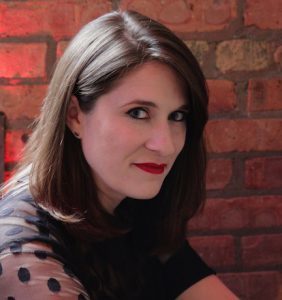
Erica Ruth Neubauer
Erica Ruth Neubauer spent eleven years in the military, nearly two as a Maryland police officer and one as a high school English teacher before finding her way as a writer.
She has been a reviewer of mysteries and crime fiction for publications such as Publishers Weekly and Mystery Scene Magazine for several years, and she’s a member of Sisters in Crime and Mystery Writers of America.
Erica Ruth lives in Milwaukee, WI with her husband.
To learn more about Erica, click on her name, photo, or any of the following links: Facebook, Twitter, and Instagram.
The Book: Subgenre: Historical Mystery
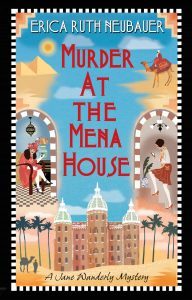
Historical Mystery
“A thrilling new series!”
—Victoria Thompson, national bestselling author of Murder on Union Square
It’s 1926, and Jane Wunderly is an American widow traveling with her wealthy aunt to Egypt.
She is accused of the murder of an unpleasant young flapper and finds that she needs to uncover everyone’s secrets to clear her own name.
To buy the book, click on any of the following links: IndieBound, Amazon, and Barnes and Noble.
The Interview
Describe your publishing journey:
Murder at the Mena House is my first manuscript. I wrote a really rough first draft and then put it away for a few months before pulling it back out and working on it again.
I had a few friends in the mystery community take a look and give me some advice, and then I worked on re-writes for quite a few months before I hired a freelance editor to work with me on it.
Once she thought I was ready, I sent it out to agents. I collected a fair share of rejections before a friend reached out to one of the agents I really wanted to work with—he knew her from conferences and mentioned that I had queried her.
That agent had me re-submit my query—which had been lost in the shuffle—and I ended up signing with her. She sent out my novel and I got picked up in the first round of submissions by Kensington.
“My dad raised me on Masterpiece Mystery and all the old Agatha Christie movies and shows.”
What inspired you to write this novel?
My dad raised me on Masterpiece Mystery and all the old Agatha Christie movies and shows.
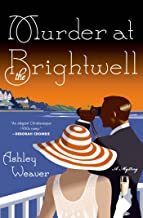 Somewhere I picked up very romantic ideas about Egypt in the 1920’s, and had been wanting to read something set there—in a grand hotel with slow turning fans overhead and everyone is dressed in fabulous clothing but are all suspects in a murder.
Somewhere I picked up very romantic ideas about Egypt in the 1920’s, and had been wanting to read something set there—in a grand hotel with slow turning fans overhead and everyone is dressed in fabulous clothing but are all suspects in a murder.
I was sitting with my best friend on the porch one afternoon reading Ashley Weaver’s Murder at the Brightwell and it struck me that I wanted to write something similar to that, but set in that 1920’s Egyptian setting. So I did.
What are you working on now?
I am actually working on the third in the series right now. The second book is set in an English manor house, and this third book is set on a transatlantic cruise. Same characters, new locations.
The subgenre of historical mysteries requires a different kind of research than the contemporary mystery. Not just the nuts and bolts of crimes and investigations, but the everyday experiences of a specific time period. In this case, it also required an understanding of another country and culture.
The Writer
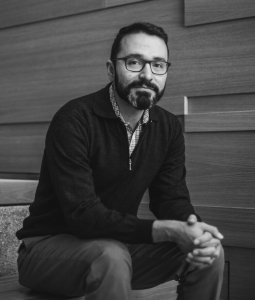
Richard Santos
Richard Z. Santos is a writer and high school teacher living in Austin. His debut novel, Trust Me, will be released by Arte Público Press on 3/31/2020.He is a Board Member of the National Book Critics Circle and served as a non-fiction judge for the 2019 Kirkus Prize. He is also an Associate Editor for American Short Fiction. Click on the “My Work” page for links to many essays, stories, poems, reviews, and profiles.
Before becoming a writer and teacher, Richard lived in Washington, DC and worked for some of the nation’s top campaigns, political consulting firms, and labor unions.
Richard has an MFA from Texas State University and has taught at Texas State, Georgetown University, and The University of the District of Columbia.
To learn more about Richard, click his name, photo or the following links: Facebook , Instagram, and Twitter,
The Book: Subgenre: Suspense Thriller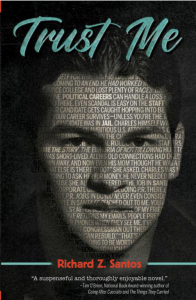
Suspense Thriller
[image error]Trust Me is a story about drug dealing, corruption, and land rights in Santa Fe.
A development group has bought land from a Native American pueblo in order to build Santa Fe’s first modern airport, but a skeleton is found on the construction site which grinds everything to a halt.
Charles O’Connell, a washed up east coast politico who almost followed his previous candidate to prison, gets a job offer out of nowhere and heads to Santa Fe to work on public relations for the airport project.
He quickly realizes he’s in way over his head and has to decide if it’s worth finally making some money, even if there’s more than a few risks.
At the same time, Gabe Luna loses his job on the airport site and double crosses a dangerous friend to get the money he needs to reconnect with his estranged teenage son.
To buy the book, click on any of the following links: Amazon, Barnes & Noble, IndieBound
The Interview
Describe your publishing journey:
My publishing journey has been long and winding!
I wrote and rewrote this novel several times but still couldn’t get any traction with it. After I received my 50th agent rejection, I put it away.
But then Arte Público Press won the National Book Critics Circle Lifetime Achievement Award and I saw they have open submissions.
I decided to give it one more shot and sent it their way. A month later they told me they wanted the book and here we are!
Richard’s Suspense Thriller also falls into the subgenres of literary fiction and Hispanic American Literature
What inspired you to write this novel?
This book was inspired by my time working in politics and my connection to Santa Fe.
I used to work in Washington, DC and took a campaign job in New Mexico.
My mother’s family is from New Mexico and I knew the state well but I had never lived there.
Spending a year in Santa Fe really opened my eyes to the complexities and contradictions of the state and I knew I wanted to write a book featuring these themes.
What are you working on now?
I have a complete draft of a second novel called Every Family Is A Conspiracy Theory. It’s set about two weeks after a massive societal upheaval has caused society to grind to a halt and basically reboot.
Kind of weird timing I realize now!
The two main characters are a brother and sister whose mother went missing just before the upheaval and are realizing no one is interested in looking for their mother with so much chaos happening around them.
As they learn more about their mother they realize how little they knew about her.
They all sound fascinating! Thanks for spending time with us today and congratulations on your debuts!
Header photo by Anhur on Pixabay. Click the link here for more information.
The post Three Subgenres in Crime Fiction: Three New Novels appeared first on Elena Taylor.
March 25, 2020
Author Christina Hoag Answers, Why do we love mysteries?
Author Christina Hoag guest writes my latest blog post – enjoy!
Cracking the Mystery of Why We Love Mysteries
By Christina Hoag
Amateur sleuths, hardboiled cops, private eyes, spooks and spies. We love them all. Mysteries and thrillers make up the second most popular genre of books after romance. Why are we as readers so drawn to these stories that plumb the dark recesses of human nature?
Scroll through my blog posts to find various new mysteries, from thriller to academic cozy.
I’ve often pondered that question as I browse through mystery sections at the local bookshop or at the library, looking for something that grabs me. Genre fiction, after all, tends toward the formulaic. When we pick up a mystery or thriller, we know what it’s going to be about. A major crime, generally a murder or series of them, is committed, and the crime-solving protagonist nabs the killer.
So why do we bother reading on when we know the basic outcome before we even crack open the cover?
I’ve come up with a couple thoughts. See if you agree.

For one, we know that mysteries and thrillers promise us action and adventure — hot pursuits and drawn guns — that other books don’t deliver. It’s an adventure that few of us will get to experience in real life, but we can vicariously live through our protagonists.
We can see ourselves in these hero figures, who are inevitably stronger, braver and more quick-thinking than the average person/reader. At some subconscious level, they represent who we’d like to be.
We can participate in all this without fear or risk to ourselves. The price of admission is simply a suspension of disbelief and an armchair.
For the most part, mysteries and thrillers present black-and-white moral choices. The hero and the villain are easily distinguishable, so we know who to root for. Likewise, the vast majority of novels end with the killer’s capture or slaying. So, there’s a sense of justice served that appeals to our desire for fairness and balance.
We feel safe and satisfied knowing that the bad guy will get punished because that’s how life should be, and we know that doesn’t always occur in reality.
In real life, when someone we perceive as guilty gets away with his crime, it leaves a lingering resentment of those tilted scales, but in fiction, we know the scales will be balanced, that the loose ends will tie into a neat bow, and that’s comforting. —Christina Hoag
In real life, when someone we perceive as guilty gets away with his crime, it leaves a lingering resentment of those tilted scales, but in fiction, we know the scales will be balanced, that the loose ends will tie into a neat bow, and that’s comforting.
Mysteries and thrillers also engage and challenge our intellect through clues. We like puzzles and plot twists, clever surprises that we didn’t guess at, as well as guessing where the plot is going before our hero crime-solver. We learn new things by delving into the different worlds characters pull us into, either through the crime-solver, the victim, or the criminal.
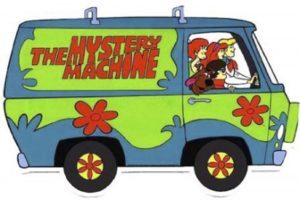
Ah, the criminal. As much as we love the good guys, we love the bad guys, too, in that we are fascinated by them.
Most people are law-abiding citizens, give or take a few speeding tickets and an assortment of other minor infractions. We wouldn’t go to the extreme of holding up a bank or killing someone. However, we may often harbor that desire, especially if we perceive that someone or something has wronged us and we feel helpless to right that wrong, to restore the aforementioned balance of fairness.
We’re intrigued, then, by perpetrators who do go to the length of committing serious crime. How do they summon the courage to actually break a law and then morally live with themselves afterward? Why do they risk going to prison?
We also may be fascinated with how they commit their crime and cover their tracks. The smarter they are, the more respect we have for them, and consequently, for our super-brainy crime-solver who catches them.
Last but not least, mysteries and thrillers are escapist entertainment.
—Christina Hoag
Last but not least, mysteries and thrillers are escapist entertainment.
Since most of us are neither crime-solvers or criminals, we can leave our own messy worlds for a while to enter a world where we know things will work out in the end. Perhaps that even gives us confidence that our own struggles will work out as well.
Those are some broad brushstrokes of why I think mysteries and thrillers remain a perennial favorite.
Why do you like mysteries?
Christina Hoag and I would love to hear your thoughts – feel free to leave a comment!
Author Christina Hoag
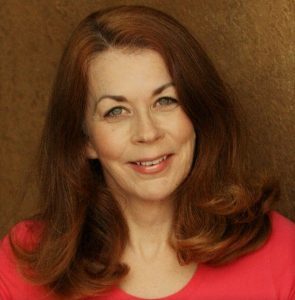
Christina Hoag
Author Christina Hoag is a former journalist who has had her laptop searched by Colombian guerrillas, phone tapped in Venezuela, was suspected of drug trafficking in Guyana, hid under a car to evade Guatemalan soldiers, and posed as a nun to get inside a Caracas jail.
She has interviewed gang members, bank robbers, thieves and thugs in prisons, shantytowns and slums, not to forget billionaires and presidents, some of whom fall into the previous categories.
Now she writes about such characters in her fiction.
Christina’s noir crime novel Skin of Tattoos was a finalist for the 2017 Silver Falchion Award for suspense, while her YA novel Girl on the Brink was named one of Suspense Magazine’s Best of 2016 for young adults.
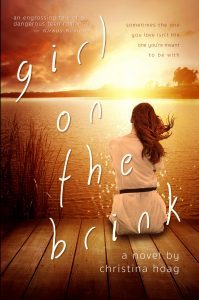
YA Novel
She also co-authored the nonfiction book, Peace in the Hood: Working with Gang Members to End the Violence, which is used as a textbook at University of California Los Angeles, University of Southern California, The Chicago School of Professional Psychology and other academic institutions.
She has had numerous short stories, creative nonfiction essays and poems published in literary journals.
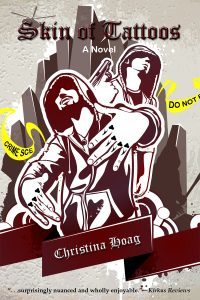
Noir – Crime Fiction
She’s a former staff writer for the Miami Herald and Associated Press and reported from 14 countries around Latin America for Time, Business Week, New York Times, Financial Times, Sunday Times of London, Houston Chronicle and other news outlets.
A graduate cum laude of Boston University, she won two prizes from the New Jersey Press Association in her newspaper career.
Born in New Zealand, Christina grew up as an expat around the world. She now lives in California, where she has taught creative writing at a maximum-security prison and to at-risk teen girls.
She is a regular speaker at women’s conferences, writing conferences and organizations, book clubs and stores, and libraries.
To learn more about Author Christina Hoag, or to buy her books, click on her name, photo or the following links: Facebook, Instagram, Twitter, and Goodreads
The post Author Christina Hoag Answers, Why do we love mysteries? appeared first on Elena Taylor.
March 22, 2020
From the Query Trenches to Debut Author
Query Trenches are the dreaded experience most authors go through to launch their debut novel. To “query” is the process of sending out emails and sample of a finished manuscript to agents (and sometimes editors) with the hope that one of them will be interested enough to request the full manuscript.
Once they read the full manuscript, the hope is that that agent will offer representation.
If that agent offers representation, the author then often goes through multiple rewrites before the agent sends queries out to publishers and the process starts all over again.
Congratulations to debut author Diana Urban on surviving the trenches to launch her stellar first novel.
Love locked room mysteries? Don’t miss my interview with Tessa Wegert, click the link here to read.
The Author
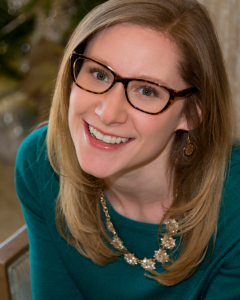
Diana Urban
Diana Urban is an author of dark, twisty thrillers.
When she’s not torturing fictional characters, she works in digital marketing for startups.
She lives with her husband and cat in Boston and enjoys reading, yoga, fawning over cute animals, and looking at the beach from a safe distance.
To learn more about Diana, click on her name, photo, or any of the following links: Instagram, Twitter, and Facebook
The Book
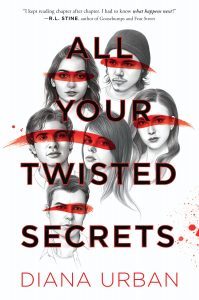
Surviving the Query Trenches
In this locked-room psychological thriller R.L. Stine called “a frightening page-turner,” six teens arrive at an invite-only dinner and find themselves trapped in a room with a syringe of poison, a bomb, and a note that if they don’t choose one person to kill within an hour, they will all die.
“With mystery layered on intrigue layered on suspense, Urban delivers a fast-paced, unforgettable escape room thriller—a gripping debut … I can’t wait to see what Urban has for us next.”
—Wendy Heard, author of The Kill Club (Want to read my interview with Wendy Heard for her debut? Click the link here)
To buy the book, click on any of the following links: Amazon, Barnes & Noble, IndieBound, for a signed hardcover copy click here, Additional purchase links click here.
The Interview
Describe your publishing journey:
It was a long road to publication for me. All Your Twisted Secrets is actually the third novel I’ve written, and I went on submission to publishers four times with three different agents before selling a manuscript. All told, it was six years and three months between finishing writing my first novel and the day my debut novel was published.
For the sake of brevity, I’ll skip to how I got my agent and publisher for All Your Twisted Secrets. After parting ways with agent #2, I was eager to get my books into readers’ hands, so planned to indie-publish my first novel. I even hired a copyeditor and started researching cover designers. I was ready.
Around the same time, I finished editing All Your Twisted Secrets and sent it to CPs, who said they loved it. A few told me it was the most marketable book I’d written, and encouraged me to try for a new agent. But that would mean nixing my plans to indie-pub if I signed with an agent, they’d need to pitch All Your Twisted Secrets to publishers as my debut.
After a significant amount of soul-searching, I decided to give traditional publishing one last shot. It’s a dream I had for years, and if this book could make those dreams come true, I wanted to go for it.
Of course, that meant querying agents all over again.
“The “query trenches” are aptly named — pitching your novel to literary agents is like putting your emotions through a war zone.”
The “query trenches” are aptly named — pitching your novel to literary agents is like putting your emotions through a war zone. The rejections are brutal, and the silence is even more torturous. But this time around, I felt more prepared to query than ever before, thanks to all the lessons I learned over the previous few years. And I ended up getting an offer of representation after three weeks and signing with my dream agent Jim McCarthy.
We did one small round of edits together before going on submission to publishers in January 2018. After a couple of months on sub, HarperTeen asked me for a partial R&R — they wanted me to change the weapon in the room and to reduce the number of characters locked in (from nine to six!).
I had a fantastic call with Catherine Wallace, who ultimately became the editor for All Your Twisted Secrets. I could hear her enthusiasm for my story and my ideas for tackling the revision. So I was willing to give it a shot, and was excited to see where it went.
After sending in the partial revision, I continued revising the entire manuscript. So by the time I got “the call” a month or so later, the full revision was ready to go. Three months later, I was able to announce the deal, and the rest is history!
What inspired you to write this novel?
One day my husband and I started speculating the shortest timespan you could set a book or movie to, throwing ideas back and forth. Could an entire book take place over just fifteen minutes? No way, that’s not enough time to accomplish anything. But what about an hour? What if you locked a group of people in a room for an hour?
What if someone died at the end of the hour? What if the trapped people killed one of them? What if they had to choose someone to kill, or else they’d all die? We exchanged this look that was like, “Bingo,” and I raced to my desk and started scribbling down ideas for characters I could put into this crazy situation.
Now that Diana Urban is past the query trenches for her first book . . . what’s next?
What are you working on now?
While I can’t get into specifics here, I will say that I finished writing two different first drafts in 2019 — both young adult thrillers — and now I’m working on revising one of these!
Great story of perseverance! Thank you for sharing your story with us!
Header photo by Klimkin on Pixabay. Click the link here for more information.
The post From the Query Trenches to Debut Author appeared first on Elena Taylor.
March 19, 2020
Domestic Suspense Gains a Stellar New Author
Wondering what I’m reading now? I’m reading this terrific debut, guaranteed to be a hit with anyone who loves domestic suspense.
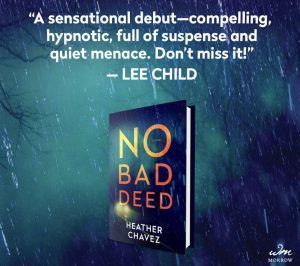
Domestic Suspense
If Lee Child recommends it, you know it’s going to be good!
Looking for other new books and thoughts on writing? Catch up on all my blog posts by clicking the link here.
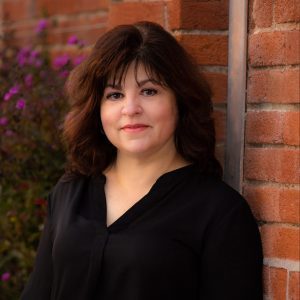
Heather Chavez
The Author
Heather Chavez is a graduate of UC Berkeley’s English literature program.
She has worked as a newspaper reporter and editor and lives in Santa Rosa, California, with her family.
Her debut thriller No Bad Deed released February 18 in the U.S. by William Morrow and in the U.K. by Headline. It will also be translated into five other languages.
To learn more about Heather, click on her name or photo or any of the following links: Instagram, Facebook, Twitter, and Goodreads.
The Book – Domestic Suspense
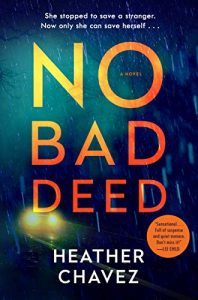 Driving home one night, veterinarian Cassie Larkin sees a man and woman fighting on the side of the road.
Driving home one night, veterinarian Cassie Larkin sees a man and woman fighting on the side of the road.
When she steps in, the attacker warns her: “Let her die, and I’ll let you live.”
Trained to heal, Cassie isn’t about to let the woman die. But while she’s helping the unconscious victim, the attacker steals her car.
Now he has her name. Her address. And he knows about her children.
The next night, Cassie’s husband disappears. Are these events connected?
As she searches for answers, Cassie discovers that nothing is as random as it seems, and that she is willing to go to the most terrifying extremes to save her family.
To buy the book, click on the link here for Amazon, Barnes&Noble, IndieBound, Books-A-Million, and iBooks
What Readers Are Saying About This Hot New Domestic Suspense . . .
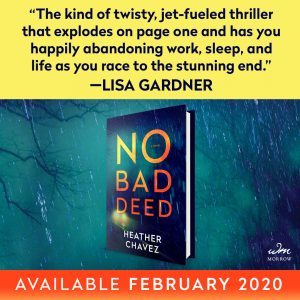 “An extraordinary thriller… that may well become the book everyone is talking about…In a mesmerizing first-person narrative, [Cassie’s] fear is palpable, then vanquished by an astonishing ferocity she finds within herself. Where does that come from? Wait until you find out. This one glows in dark.”- Booklist (starred review)
“An extraordinary thriller… that may well become the book everyone is talking about…In a mesmerizing first-person narrative, [Cassie’s] fear is palpable, then vanquished by an astonishing ferocity she finds within herself. Where does that come from? Wait until you find out. This one glows in dark.”- Booklist (starred review)
Domestic suspense is a type of thriller that focuses on interpersonal, usually romantic, relationships.
“[A] propulsive debut… Chavez peoples her tale with credible, flawed individuals, presenting even the multiple antagonists with harrowing backstories and convincing psychological motives… Chavez is in full command of plot and pacing… Domestic thriller fans will be well satisfied.”- Publishers Weekly
“Chavez’s breathless page-turner will have every aspiring Good Samaritan thinking maybe they should let the NEXT guy help.”- Linwood Barclay, author of The Noise Downstairs and No Time for Goodbye
“Heather Chavez’s debut novel starts at a sprint and never lets up, twisting its way to an exhilarating, you’ll-never-guess-it ending.”- Peter Swanson, author of Before She Knew Him
“A treacherous game of cat and mouse and a frantic race against time until the final explosive twist. Chavez has crafted the perfect thriller.”- Liv Constantine, author of The Last Time I Saw You and The Last Mrs. Parrish
“Twisty, timely and absolutely terrifying, Heather Chavez’ No Bad Deed is a propulsive thriller that grabbed me from the very first page and didn’t let go. A terrifically suspenseful read.”
– Alison Gaylin, Edgar-winning author of Never Look Back
“A sensational debut – compelling, hypnotic, full of suspense and quiet menace. Don’t miss it!”- Lee Child
Header Photo by Open ClickArt Vectors. Click the link here for more information.
The post Domestic Suspense Gains a Stellar New Author appeared first on Elena Taylor.
March 15, 2020
We are Living in Strange Times: A Writer’s Life
Thursday was the first day of Left Coast Crime. A popular crime writers conference that signals the beginning of conference season for a lot of us.
The weeks leading up to the conference were filled with anxiety. A lot of writers cancelled due to the rising concerns of the corona virus. Some due to personal health concerns (crime writers come in all ages and with underlying issues) and some with concerns of bringing something home to family and friends with compromised immunities.
We all wondered if the conference would get cancelled.
But the week of the con arrived and a lot of us showed up for the first day, wondering if any readers would be there.
Lo and behold, despite the constantly changing line up of panels and presenters, the readers were there en masse to chat with favorite authors and meet new ones.
Author Speed Dating
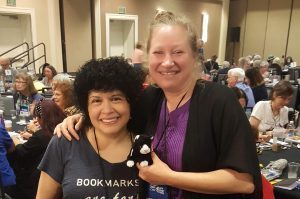
Catherine Bruns and Luigi with Elena
My first event was Author Speed Dating. I teamed up with Catherine Bruns, someone I adore and have done events like this with before.
We started at Table 11 and worked our way through to Table 20, where we got a quick break, then back to tables 1-9. (Table 10 was another rest table.)
Each table was filled with up to ten readers. Each author got 2 minutes to give a spiel about their writing.
I focused on All We Buried, as it launches April 7. Catherine – an amazing and prolific author – talked about her four different series.
At the end of 2 minutes a bell rung and the other author spoke.
Great readers in the midst of these strange times.
We had a blast. Kind, attentive readers made the two hours fly by.
Then I scoped out the Milano Coffee Company, which had generously let me reserve a table for an author/reader connection. I confirmed there would be nine of us meeting the next day. Then I stayed and had an excellent latte.
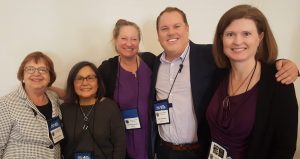
Merrilee, Naomi, Elena, John, Claire
Back to the con in time to moderate a panel with four fantastic authors, Claire Booth, Naomi Hirahara, John McMahon, and Merrilee Robson.
Murder in a Small Town: Adding small community flavor to crime fiction.
Again, the audience was full of engaged, upbeat folks, who asked smart questions and appeared to enjoy our dynamic panel. (I had the BEST fellow authors onstage to wrangle — I’d do a panel with those four again any day.)
The conference was off to a great start.
There were bumps, complications with book sales, a lot of scrambling for the organizers to keep up with author availability, but nonetheless, people were in good spirits, embracing the new elbow rub greetings and able to make jokes about the anxious times.
San Diego County Deals with these Strange Times.
Then the San Diego County Agency of Health and Human Services locked us down. The conference could not continue, as it was a group larger than 250 people.
Everyone scrambled to adjust their schedules and their expectations. Authors tracked down unsold books. Attendees rebooked flight plans. We hurried to say our goodbyes.
It was heartening to see how kind everyone was to each other in these strange times. Regret for lost chances to connect. Kudos to the organizers for their hard work in a constantly shifting situation. And a reflection on how impacted the people who work at the hotel will be – the loss of wages, and potentially even jobs, over the economic aspects of the situation.
Returning home, I sat with a pilot heading to SeaTac to fly a plane back to San Francisco. He was ex-military and had already weathered two pandemics in the past in that capacity. His perspective was fascinating. He had a lot of information as someone with experience and he was also thoughtful about human behavior.
Managing Expectations in Strange Times
Over and over he used the term “managing expectations.”
To simplify, a lot of how a community reacts to a scary situation is the management of expectations. If we expect to recover in a week and it takes a month, people are going to struggle even more than if they expect to recover in two months and recover in one.
Same time frame, but the expectations are different.
My thought for the day is manage your expectations. You don’t have to panic and hoard toilet paper, but you should plan for a serious disruption to your plans and activities.
Don’t sell all your stocks and hide cash under your mattress, but assume there will be economic hardships for a lot of people in the short term.
Be Kind to Each Other in These Strange Times
Tip the hardworking staff in hotels and restaurants and bars well.
Be kind to the folks stocking those empty shelves in the grocery store. They are putting themselves out there to help you get through these strange times. It’s not their fault some people are thinking only of themselves and not their neighbors.
Recognize fear, and let yourself feel that emotion, then find ways to move yourself out of fear and into a proactive state. That might mean staying home and not interacting with other people, or it might mean visiting the elderly or disadvantaged individuals in your community. Find the balance between living your life and making smart choices to protect yourself and your community.
Take care of yourself and others and wash your hands.
We get through this by acting in the best ways that humans can. By a focus on community, compassion, and kindness.
And if you find yourself with nothing to do . . . support an author and buy a book, then post that good review on Amazon.
We’re all in this together.
The post We are Living in Strange Times: A Writer’s Life appeared first on Elena Taylor.
March 8, 2020
Crooked Lane Launches Debut Ian Pisarcik
Crooked Lane launches debut Ian Pisarcik with Before Familiar Woods. A novel already garnering excellent reviews, including a starred review with Publisher’s Weekly. Click the link here to read the full.
Not only do we have the same publisher and editor, but we both live in Washington State. I’m thrilled to host Ian on my blog this week.
Launching March 10!
Curious about other authors Crooked Lane has launched as debuts? Read my post about author Eliza Nellums by clicking the link here.
The Author
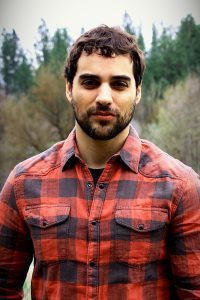
Ian Pisarcik
Ian Pisarcik was born and raised in rural New England.
His stories and poems have appeared in the Roanoke Review, Lullwater Review, Maine Review, and the Flyway Journal of Writing and Environment.
He currently lives in Washington State with his wife, newborn daughter, and Labrador retriever.
Before Familiar Woods is his first novel.
To learn more about Ian, click on his name, photo, or any of the following links: Twitter, Instagram, Goodreads, Facebook
The Book
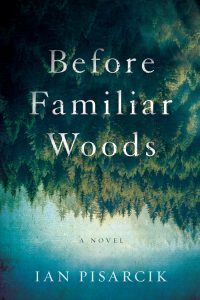
“Outstanding…Pisarcik is a writer to watch.”
—Publishers Weekly starred review
“Beautifully done and will certainly strike a chord with readers who appreciate the similar styles of Daniel Woodrell and David Joy.”
—Booklist
On the outskirts of a town in northern Vermont, two boys were found dead inside a tent covered in bruises and human bite marks.
Three years later, their fathers have disappeared.
To buy the book, click on any of the following links: IndieBound, Amazon, Barnes & Noble, and Books-A-Million
The Interview
We are both Crooked Lane authors. How did you come to work with Crooked Lane Books?
My agent, Alec Shane, has a relationship with Crooked Lane Books (one of his other clients, Hank Early, has published three books through Crooked Lane), and fortunately Crooked Lane was interested in Before Familiar Woods.
I remember my first conversation with my editor, Jenny Chen. She gave me her take on Before Familiar Woods and also talked about a number of writers I really admire (people like Daniel Woodrell, Joe Wilkins, Brian Panowich, and Megan Abbott).
I knew right away that she was super smart and that she understood and appreciated what I was trying to do with Before Familiar Woods. I really lucked out as far as editors go. She’s been tremendous to work with.
(Jenny is my editor too! She’s amazing!)
Crooked Lane Launches Debut
The environment plays an important role in your novel, which is set in Vermont. Why did you decide on Vermont as the location for your book?
Environment is really important to me. I grew up in a rural town in northwest Connecticut that’s known affectionately as “the Icebox.”
It’s an area that’s remote, densely wooded and, for most of winter, brutally cold. I also had family that lived in a small town in Vermont and I spent a lot of time there growing up.
The fictional town in Before Familiar Woods is sort of a combination of these two towns.
I ultimately chose Vermont instead of Connecticut because it allowed me to create a little distance from my hometown.
Washington State is a terrific place to live if you’re a writer.
You live in Washington State, are you impacted in any way by being a Pacific Northwest Author?
Washington State is a terrific place to live if you’re a writer.
Spokane in particular has a number of literary events, including the annual “Get Lit! Festival,” and there are a number of really impressive independent bookstores—most notably Wishing Tree Books and Auntie’s Books.
There are a ton of writers living in the Pacific Northwest (including you!) and so I suppose the Pacific Northwest impacts me as a writer by being a constant source of inspiration and support.
It’s a pretty amazing place to live.
What inspired you to write this novel?
All of my stories have started with an image that I can’t shake.
In the case of Before Familiar Woods, the image was an old woman sitting on a porch with a deer rifle in her lap staring out at an empty gravel drive.
From there, I started asking questions. Who is this woman? Why is she holding a deer rifle? Who is she waiting for? After several drafts and many more wrong turns, the character’s voice developed, and at that point the questions became deeper.
That’s always the goal — the point where you’re not so much actively coming up with a story as listening to one unfold.
“One of the facts I read that served as a spark for the draft is that the suicide rate for farmers is more than double that of war veterans.”
What are you working on now?
I’m working on the first draft of a novel that will probably turn into something entirely different by the time it’s done.
One of the facts I read that served as a spark for the draft is that the suicide rate for farmers is more than double that of war veterans.
It’s a statistic that shocked me and one I wanted to explore in some way—even if it’s not the main storyline.
Wow – that is a shocking statistic. I’m curious to see what you do with that in your next novel.
Words of wisdom for writers hoping to land an agent and/or publishing deal.
One of my favorite writers, Larry Brown, wrote five novels and ninety short stories before he had anything published.
I have novels stuffed in my desk that will never see the light of day.
Bottom line: There are no shortcuts. You’ve just got to keep writing and reading.
And as one of my favorite writers, Kent Haruf, was fond of saying: “You’ve got to believe in yourself despite the evidence.”
Congratulations on having Crooked Lane launch your debut novel.
Looking forward to reading your work!
Header photo by jplenio on Pixabay. Click the link here for more information.
The post Crooked Lane Launches Debut Ian Pisarcik appeared first on Elena Taylor.
February 26, 2020
A Locked-Room Mystery For the 21st Century
A “locked-room” mystery is one set in an isolated location with a set number of characters providing the suspects for a murder investigation.
Agatha Christie was a genius at this subgenre, and debut novelist Tessa Wegert brings it into the 21st Century.
Curious about other mystery subgenres? Read my interview with Mary Angela and her Academic Cozy Series by clicking the link here.
The Author
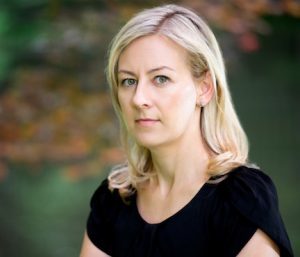
Tessa Wegert
Tessa Wegert is a freelance writer whose work has appeared in Forbes, The Huffington Post, Adweek, and The Economist.
She grew up in Quebec near the border of Vermont and now lives with her family in Connecticut.
Tessa writes mysteries set in Upstate New York while studying martial arts and dance.
To learn more about Tessa, click on her name, photo or any of the following links: Facebook, Twitter, and Instagram.
The Book
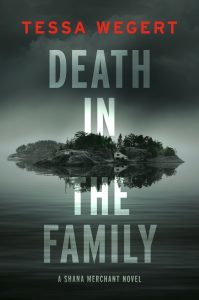
Book One
After barely escaping a serial killer, former NYPD detective Shana Merchant is looking for a fresh start in the Thousand Islands of Upstate New York.
But as a nor’easter bears down on the region, she and her fellow investigator receive a call about a strange occurrence on a private island, and Shana must unravel the mystery of a missing man before a killer strikes again.
To buy the book, click any of the following links: Amazon, Barnes & Noble, IndieBound (hardback), and IndieBound (Audiobook)
The Interview
Describe your publishing journey:
Death in the Family was the fifth book I wrote but the first to be published.
It was also my first attempt at writing a mystery after years of focusing on thrillers and a lifetime of writing short stories and poems just for kicks.
It took about three and a half years for this book to go from concept to market, but a sequel is hot on its heels.
Congratulations on the second book as well!
What inspired you to write this novel?
I started writing Death in the Family after rereading Agatha Christie’s And Then There Were None, which is one of my favorite novels.
I was a regular visitor to the Thousand Islands, and always thought it would be the perfect setting for a mystery.
The Thousand Islands is an archipelago of over 1800 islands that are stretched between the Canadian and US border.

Thousand Islands
Many of the islands in the area are privately owned, and each has its own unique charm and backstory.
Revisiting that Christie classic and my preoccupation with the Thousand Islands, its novelty, and its rich history as a playground for the wealthy during the Gilded Age, gave me the push I needed to get writing.
Agatha Christie’s Famous Locked-Room Mystery, And Then There Were None, has been published under different names including: Ten Little Indians. It has been successfully adapted into stageplays, films, and television miniseries – including the most recent 2015 BBC One production.
What are you working on now?
I’m currently in the editing phase for the next book in the Shana Merchant series, which delves into Shana’s past and her connection to the serial killer she’s been hunting.
I’m also in the process of revising a thriller that I wrote several years ago.
Great to have you on my blog – I look forward to having you back for book two!
Thousand Islands photo by JosettePlank on Pixabay. Click the link here for more information.
The post A Locked-Room Mystery For the 21st Century appeared first on Elena Taylor.
February 23, 2020
Art and Murder: Chatting with Author Saralyn Richard
Art and murder go hand in hand in Saralyn Richard’s latest novel.
Want to learn more about a writer’s life? Click the link here.
The Author
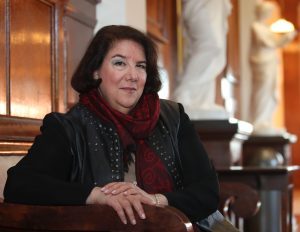
Galveston Author Saralyn Richard
Award-winning mystery and children’s book author, Saralyn Richard, is a writer who teaches on the side.
Her books, Naughty Nana, Murder in the One Percent, and A Palette for Love and Murder, have delighted children and adults, alike.
A member of International Thriller Writers and Mystery Writers of America, Saralyn teaches creative writing at the Osher Lifelong Learning Institute, and continues to write mysteries.
Reviews, media, and tour schedule may be found at saralynrichard.com
Learn more about Saralyn by clicking on any of the following links: Twitter, Facebook, LinkedIn, Instagram, Pinterest, and Goodreads
Interested in having Saralyn speak at your bookclub or organization? You can reach her at: saralyn@saralynrichard.com.
The Books
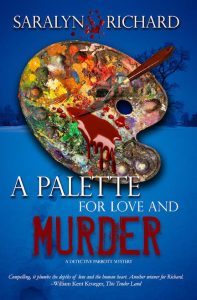
Art and Murder
EVERYONE HAS A PAST, BUT NO ONE IS TALKING.
Welcome to the art community of Brandywine Valley. Detective Parrott’s next case takes us to the world of valuable paintings, famous artists, and dark secrets.
Well-respected artist, Blake Allmond, lives under a black cloud with no umbrella. When two paintings are stolen from his studio, Parrott takes on the case.
Soon theft leads to murder, a treasure hunt, a search for a killer–and then the investigation becomes personal.
To buy the book: Amazon, Barnes & Noble, and IndieBound
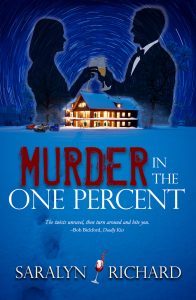
Class and Murder
Someone comes to the party with murder in his heart and poison in his pocket…
A powerful and rich playboy, a rare but naturally occurring poison, a newly divorced woman with an axe to grind, and pressure from the former President of the US—these are just a few of the challenges that African-American Detective Oliver Parrott faces when he answers a routine call for back-up and discovers someone died at a country estate the morning after an elaborate birthday party.
When Parrott learns the deceased is the wealthy former US Secretary of the Treasury and just about everyone at the party had a motive to kill him, he realizes this will be the investigation to make—or break—his career.
To buy the book: Amazon, Barnes & Noble, and IndieBound
The Interview
Murder in the One Percent introduced us to Detective Parrott. What was it like diving back into a character you already knew?
As a reader and as a writer, I’m always sad to say goodbye to great characters at the end of a book, and that was the case with Detective Parrott.
Once Murder in the One Percent was out, and finding its audience, I was delighted to learn that Parrott’s work ethic and moral compass was resonating with readers, as well. It was actually Parrott’s fan base who convinced me to write a second Parrott mystery.
A Palette for Love and Murder takes up with Parrott after his successful wrap-up of the high-profile case in the first book, and after he and new wife Tonya return from their honeymoon.

A house in Brandywine
Still in Brandywine Valley (with appearances from a few familiar characters), Parrott begins investigating a simple art theft, but before long, he’s involved with a murder, a treasure hunt, and a mansion full of secrets—and then it becomes personal.
I loved spending more time with Parrott, getting to know him even better. He’s intelligent, patient, thorough, ambitious, and grounded, but, he finds himself facing new challenges that test his mettle.
A Palette for Love and Murder can be read as a standalone mystery, before or after Murder in the One Percent.
Art and Murder
“The art colony, most famously represented by Andrew Wyeth and his family, is well-known for its landscape paintings.”
What drew you to the art world as a setting for murder?
Brandywine Valley, where Parrott serves as detective, has several distinct communities who inhabit its lush landscape, two of which are the horse enthusiasts and the art enthusiasts.
The art colony, most famously represented by Andrew Wyeth and his family, is well-known for its landscape paintings. I’ve visited the Brandywine River Museum of Art several times, immersing myself in the techniques and aesthetics of artists from the area.
Since Murder in the One Percent involved the horse people, I wanted A Palette for Love and Murder to represent the artists.
Secrets are at the heart of all mysteries, and family secrets are a universal phenomenon.
Delving into family secrets fascinates me too, what do you think makes family history so delicious to write about?
Secrets are at the heart of all mysteries, and family secrets are a universal phenomenon. If you think your family doesn’t have any, that just means your family is still keeping the secrets from you.
Both your novels revolve around class issues. How did that become a recurring theme in your work?
I’ve always been fascinated by the ways in which people are affected by wealth, whether they have it, or don’t have it.
Despite society’s emphasis on wealth, many times it is not a determinant of happiness, but, rather, a source of complication, tension, or even burden.
Brandywine Valley is full of contrasts between the residents and the people who serve them, so it’s a natural setting for books about income inequality.
Also, the observations and experiences I’ve had with wealthy and underprivileged people alike have given me an Agatha Christie-ish perspective on the theme.
“There is nothing more rewarding for an author than to connect with readers . . .”
Your first book garnered a lot of praise and won awards. How does that impact your confidence getting ready to release book two?
There is nothing more rewarding for an author than to connect with readers, and I’m utterly gratified by the response to Murder in the One Percent.
As for confidence, I think ultimately all authors are merely storytellers, and every book is its own adventure.
If anything, I’m even more nervous about releasing A Palette for Love and Murder. Not only does it have to compete with other authors’ books, but it has to compete with my previous book.
That said, I love telling Parrott’s stories, and I hope his next case will make an even more impactful impression on readers’ minds and hearts.
What are you working on now?
I have a standalone mystery coming out in January 2021, and I have two more mysteries vying for priority in my thoughts—one another Parrott mystery, and one another standalone.
I’ve been collecting ideas for writing for a very long time. I hope I have time to write them all. (So do we!!)
” . . . the joy of writing becomes the joy of reading.”
Final words of wisdom:
I teach creative writing, so I have tons of advice for aspiring writers.
My most often-repeated wisdom is to have fun while you’re writing.
If you’re not having fun, your readers won’t have fun reading what you’ve written. Worded positively, the joy of writing becomes the joy of reading. Part of every assignment I give is to have fun.
Great interview! Thank you for joining us here on my blog – Can’t wait to read your next one!
Photo of Brandywine: tpsDave on Pixabay, click the link here for more information.
Header photo by freephotocc on Pixabay, click the link here for more information.
The post Art and Murder: Chatting with Author Saralyn Richard appeared first on Elena Taylor.
February 16, 2020
Family Secrets, Neuroscience, and Murder
Family Secrets . . .
Find out how Joanna Schaffhausen combines family secrets, neuroscience, and murder in her trio of novels, the most recent out this week from Minotaur Press!
Love to know what inspires writers? Don’t miss my post on how Nikola Tesla inspired Colleen Winter. Click the link here.
The Author
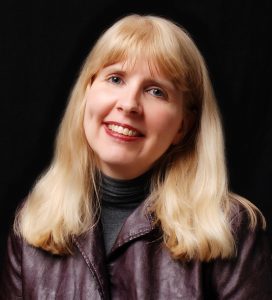
Joanna Schaffhausen
Joanna Schaffhausen wields a mean scalpel, skills she developed in her years studying neuroscience. She has a doctorate in psychology, which reflects her long-standing interest in the brain―how it develops and the many ways it can go wrong.
Previously, she worked as a scientific editor in the field of drug development. Prior to that, she was an editorial producer for ABC News, writing for programs such as World News Tonight, Good Morning America, and 20/20.
She lives in the Boston area with her husband and daughter.
To learn more about Joanna, click on her name, photo or any of the following links: Amazon, Facebook, Twitter, Instagram.
The Books
All The Best Lies
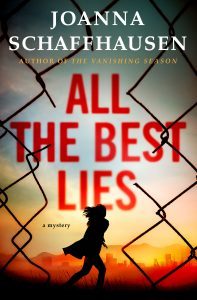
Book Three
FBI agent Reed Markham is haunted by one painful unsolved mystery: who murdered his mother?
Camilla was brutally stabbed to death more than forty years ago while baby Reed lay in his crib mere steps away. The trail went so cold that the Las Vegas Police Department has given up hope of solving the case.
But then a shattering family secret changes everything Reed knows about his origins, his murdered mother, and his powerful adoptive father, state senator Angus Markham.
Now Reed has to wonder if his mother’s killer is uncomfortably close to home.
To buy the book click on any of the following links: Amazon, Barnes & Noble, and IndieBound
No Mercy
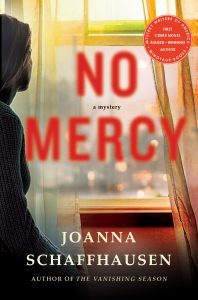
Book Two
Police officer Ellery Hathaway is on involuntary leave from her job because she shot a murderer in cold blood and refuses to apologize for it. Forced into group therapy for victims of violent crime, Ellery immediately finds higher priorities than “getting in touch with her feelings.”
For one, she suspects a fellow group member may have helped to convict the wrong man for a deadly arson incident years ago. For another, Ellery finds herself in the desperate clutches of a woman who survived a brutal rape. He is still out there, this man with the Spider-Man-like ability to climb through bedroom windows, and his victim beseeches Ellery for help in capturing her attacker.
To buy the book click on any of the following links: Amazon, Barnes & Noble, and IndieBound
The Vanishing Season
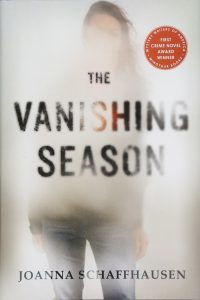
Book One
Ellery Hathaway knows a thing or two about serial killers, but not through her police training. She’s an officer in sleepy Woodbury, MA, where a bicycle theft still makes the newspapers.
No one there knows she was once victim number seventeen in the grisly story of serial killer Francis Michael Coben. The only one who lived.
When three people disappear from her town in three years—all around her birthday—Ellery fears someone knows her secret. Someone very dangerous. Her superiors dismiss her concerns, but Ellery knows the vanishing season is coming and anyone could be next.
To buy the book click on any of the following links: Amazon, Barnes & Noble, and IndieBound
The Interview
As mystery authors, we often write about family secrets. What drew you to a family secret at the heart of your latest mystery?
I think we all have family secrets, so the topic is extremely relatable. Our secrets might not be as explosive as those found in mysteries, but sometimes they are.
Families do things like accommodate predators, lie about parentage, and gaslight you till you think you’re crazy. Of course, they also lift you up and sustain you, in certain instances at the same time as they are doing awful stuff, so untangling that mess can be difficult.
Finally, the Ellery and Reed books are principally about identity: What makes us who we are and who gets to decide? Family has a big role in that, so it makes sense for the series.
“I think we all have family secrets . . .”
How does your background in neuroscience and psychology impact your writing?
I use material gleaned from my years in school and in research all the time.
The brain remains one of our biggest mysteries.
There are aspects to neuroscience that I was taught just fifteen years ago that turned out not to be true upon further study, and there’s an endless amount we still don’t understand.
What drew you to being a crime writer?
You know, I’m not sure.
I’ve been at it since I was eight.
I’ve just always been interested in the puzzle aspect of mysteries, and I like how crime stories function as a backdrop to tell other kinds of stories about the human condition: good versus evil, what do we owe each other, identity, family, revenge, romance, etc.
“I’ve just always been interested in the puzzle aspect of mysteries . . .”
How has your writing evolved over the course of three books?
Hmm. Probably not much? I wrote them back-to-back in 2015 and 2016, and because they are a series, they are supposed to feel somewhat similar.
The voice and the structure are the same. I was allowed about 20,000 more words per book after the first one, which allows one to tell wider and deeper tales.
I’m looking forward to trying out different types of narratives in between Reed & Ellery books.
You also spend time in the fascinating world of pharmaceutical research. Anything on the horizon you are especially excited about?
I retired from the pharma world a couple of years ago to write full time, but several classes of drugs that I was tracking are now hitting the market and making a big impact.
There are treatments for cystic fibrosis now that actually improve the underlying disease, not just treat the symptoms, which is amazing.
In cancer, the advent of PD-1 inhibitors has created a mini-revolution. Patients who were riddled with tumors go home tumor-free after just a few treatments. The beauty of these drugs is the clever way in which they function.
Tumors are cells that grow out of control. Usually, a person’s immune system would stop cell growth from getting to this point. But cancerous cells trick the immune system into ignoring them so that they can continue to enlarge unimpeded.
The new drugs ‘unmask’ the tumors so that the patient’s immune system can see the cancer. It shuts the tumors down hard and fast. Pretty astounding stuff!
“Neurological diseases are among the hardest to treat for a variety of reasons, not least that the brain is hard-wired to keep drugs OUT as much as possible. Just getting the treatment into the cells is a tricky business.”
Finally, and this is more of a concept than a drug right now, it is interesting to learn that nearly all of the terrible neurological disorders (ALS, Alzheimer’s, Parkinson’s Disease, etc.) have, at core, the same problem.
Misshapen proteins build up inside neurons when they should be eliminated. Healthy cells ‘take out the trash’ all the time. In these neurological conditions, the protein folding and chaperoning breaks down and the clunky proteins clog up the brain cells until they die, with devastating results.
Neurological diseases are among the hardest to treat for a variety of reasons, not least that the brain is hard-wired to keep drugs OUT as much as possible. Just getting the treatment into the cells is a tricky business.
A Writer’s Life and the Death of My Father
But the insight that all of these terrible conditions share a semi-common mechanism suggests there could be one treatment lurking out there that would be the key to solving them all.
I remain hopeful!
What are you working on now?
Up next for me is Gone for Good, a somewhat darker tale.
It’s about an amateur sleuth who decides to try to surface a serial killer who stopped killing twenty years earlier.
When she ends up dead by the same methods as his victims, the cops have to figure out if she actually found the guy or if someone else in her life used her weird hobby to murder her.
“It’s important to have friends to laugh and cry about it with so that you don’t end up talking to yourself in a locked room.”
Final Words of Wisdom:
Lean into what you’re good at and go from there. You can’t be all kinds of writer at once, nor should you be.
Make sure your prose is at least serviceable. Editors will pass on books that require too much cleaning up.
The real story is the friends you make along the way! Find writer friends to share your joys and tribulations because there is so much about this business you can’t control.
It’s important to have friends to laugh and cry about it with so that you don’t end up talking to yourself in a locked room.
Thanks for spending time with us! Best of luck with your latest release.
Header Photo by The Digital Artist on Pixabay. Click the link here for more information.
The post Family Secrets, Neuroscience, and Murder appeared first on Elena Taylor.
February 9, 2020
Complications on a Sunday Morning
Complications on a Sunday Morning . . .
You wake, but it’s still dark outside. You lie in your bed, not ready to put your feet on the floor. You listen, but the rain has finally stopped. Thirty days and thirty nights it has poured down. Acres of ponds have sprung up in the middle of fields. Road have become rivers. Rivers have become floods.
But all is quiet now.
You sink back into your pillow and all the work waiting for you comes crashing down.
First, though, you are going to read. You push the thought of work away and go downstairs.
You feed the dog and get a cup of coffee. Pouring in the cream, you realize it has gone off. Such a funny expression. “It’s gone off” – like on a trip somewhere and might someday return. It curdles in your cup, which you dump down the drain and go to your reserve of powdered Coffeemate, which has a half life of a million years and is undoubtedly bad for you, but still . . . it’s Sunday.
Coffee in hand, you download Unfollow on your e-reader. It’s fascinating and terrifying, to gain insight into a cult of hate, but the no-nonsense voice of the narrator divorces you from a more visceral reaction. She’s a human being who endured an almost unimaginable childhood. You think of your own childhood and wish there was a nonreligious word for blessed.
You read for forty-five minutes, but much as you’d like to, you can’t stay in bed and read all day.
More complications on a Sunday Morning
So you get up, intending to sit at your computer. You need to put a blog post up and that’s just the start of your work for the day.
But you realize there’s laundry to be done. So you gather the “colors” together and get them going, a basket of “darks” on deck.
It’s Sunday, so you want to go out to breakfast. But if you did, you’d eat toast AND potatoes, and that’s too many carbs, so you talk yourself out of it and go to the kitchen.

Veggies!
Eggs, you think. Eggs are protein, not carbs. But you feel a little guilty about balance, so you chop up onions and orange and red peppers and feel a little better.
You fry them in butter, so the guilt returns, but it’s “plant-based” whatever the hell that means, so not as guilty as you might have.
You drop a single piece of sourdough into the toaster and get out the strawberry jam. It’s your favorite, and it is, after all . . . Sunday.
You add a little salt and pepper, because you don’t have high blood pressure, so how much can a TINY bit of salt hurt. You butter your toast (plant-based) and glide the bright red preserves across the silky surface.
You make a cup of tea, because you drank coffee already and you’re trying to cut back on caffeine.
You go for a decaf Earl Grey, because you love the taste and go to pour in a little cream.
A few more complications on a Sunday morning.
You’re going to splurge, because it’s Sunday and add a little Xylitol (which is better than regular sugar, and you use it sparingly) but remember the cream has gone off, hand in hand, no doubt, with some other product in the refrigerator you really should clean out later in the day.
You give up on making the tea the way you want and drink it straight, because sweetner without cream never makes sense to you.
You finish preparing breakfast and sit down to eat, pulling up the second episode of Happy Valley to watch, then bite into your toast.

Yum!!
You decide that carbs, covered by a layer fat (even plant-based) and another layer of sugar (strawberry!!) may be the most delicious taste experience on the planet. It has it all, crunchy, smooth, sweet, the slight sour of the bread.
You add a little more salt to your eggs, because you don’t have high blood pressure, so how much could it hurt? You’ve rejected potatoes and a second piece of toast. You didn’t add sweetner to your tea. You have done your best to BALANCE.
You watch only a short section of the episode before you finish eating. You know that means you have to go to work. You hear the buzzer from the laundry room, time to put the “colors” in the dryer and the “darks” in the wash.
You go upstairs and do your chores. You take the last of your unsweetened, unlightened tea, which you still enjoy, even if it’s not “perfect”.
 You sit down at your computer, and the river goes by outside. It has gone way down now the rain has stopped. The sky is tinged with blue. The sun peeks through the thin clouds.
You sit down at your computer, and the river goes by outside. It has gone way down now the rain has stopped. The sky is tinged with blue. The sun peeks through the thin clouds.
And you think to yourself.
I am blessed.
Want to read a little more about a writer’s life? Check out my blog posts on my website by clicking the link here.
Veggie photo by Engin_Akyurt on Pixabay. Click the link here for more information.
Sunrise photo/header photo by realworkhard on Pixabay. Click the link here for more information.
Strawberry photo by Alexas_fotos on Pixabay. Click the link here for more information.
The post Complications on a Sunday Morning appeared first on Elena Taylor.

